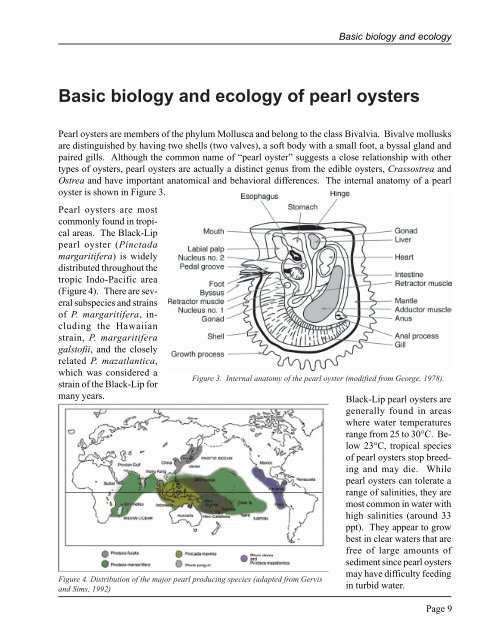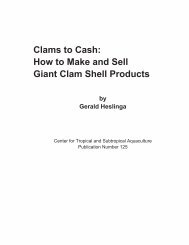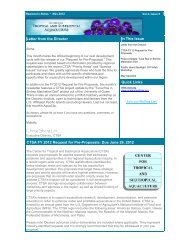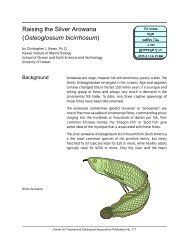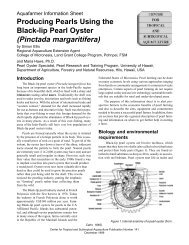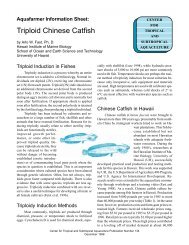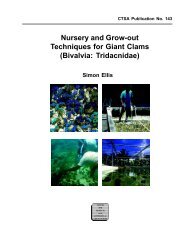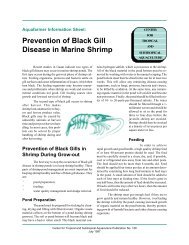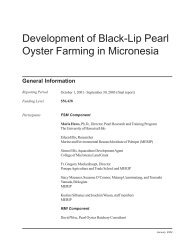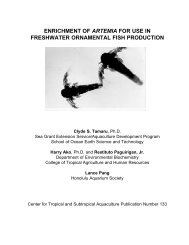The Basic Methods of Pearl Farming: A Layman's Manual - CTSA
The Basic Methods of Pearl Farming: A Layman's Manual - CTSA
The Basic Methods of Pearl Farming: A Layman's Manual - CTSA
You also want an ePaper? Increase the reach of your titles
YUMPU automatically turns print PDFs into web optimized ePapers that Google loves.
<strong>Basic</strong> biology and ecology<strong>Basic</strong> biology and ecology <strong>of</strong> pearl oysters<strong>Pearl</strong> oysters are members <strong>of</strong> the phylum Mollusca and belong to the class Bivalvia. Bivalve mollusksare distinguished by having two shells (two valves), a s<strong>of</strong>t body with a small foot, a byssal gland andpaired gills. Although the common name <strong>of</strong> “pearl oyster” suggests a close relationship with othertypes <strong>of</strong> oysters, pearl oysters are actually a distinct genus from the edible oysters, Crassostrea andOstrea and have important anatomical and behavioral differences. <strong>The</strong> internal anatomy <strong>of</strong> a pearloyster is shown in Figure 3.<strong>Pearl</strong> oysters are mostcommonly found in tropicalareas. <strong>The</strong> Black-Lippearl oyster (Pinctadamargaritifera) is widelydistributed throughout thetropic Indo-Pacific area(Figure 4). <strong>The</strong>re are severalsubspecies and strains<strong>of</strong> P. margaritifera, includingthe Hawaiianstrain, P. margaritiferagalst<strong>of</strong>ii, and the closelyrelated P. mazatlantica,which was considered astrain <strong>of</strong> the Black-Lip formany years.Figure 3. Internal anatomy <strong>of</strong> the pearl oyster (modified from George, 1978).Figure 4. Distribution <strong>of</strong> the major pearl producing species (adapted from Gervisand Sims, 1992)Black-Lip pearl oysters aregenerally found in areaswhere water temperaturesrange from 25 to 30°C. Below23°C, tropical species<strong>of</strong> pearl oysters stop breedingand may die. Whilepearl oysters can tolerate arange <strong>of</strong> salinities, they aremost common in water withhigh salinities (around 33ppt). <strong>The</strong>y appear to growbest in clear waters that arefree <strong>of</strong> large amounts <strong>of</strong>sediment since pearl oystersmay have difficulty feedingin turbid water.Page 9


